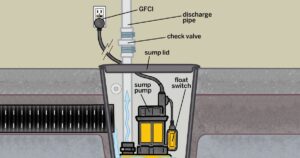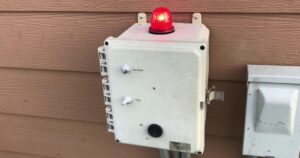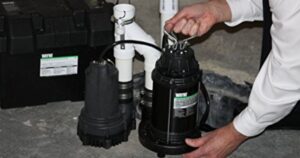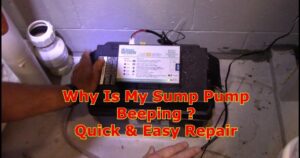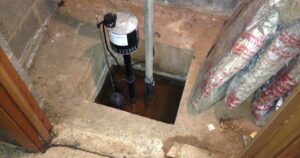In the realm of home maintenance, few issues can cause as much frustration and damage as a clogged sump pump. The juxtaposition of the seemingly small and innocuous device with the potential for basement flooding creates an immediate sense of urgency. Whether it’s unusual noises, water backups, or foul odors, recognizing these signs can save homeowners from costly repairs and protect their living spaces. This article will delve into the technical aspects of identifying a clogged sump pump, equipping readers with the knowledge they need for a sense of belonging in their own homes.
Key Takeaways
- Unusual noises or vibrations during operation can indicate a clogged sump pump.
- Water backup or flooding in the basement is a sign that the sump pump may be clogged.
- Sump pump not turning on or running continuously may indicate a clog in the system.
- Regular maintenance and cleaning can help prevent sump pump clogs.
Unusual Noises or Vibrations
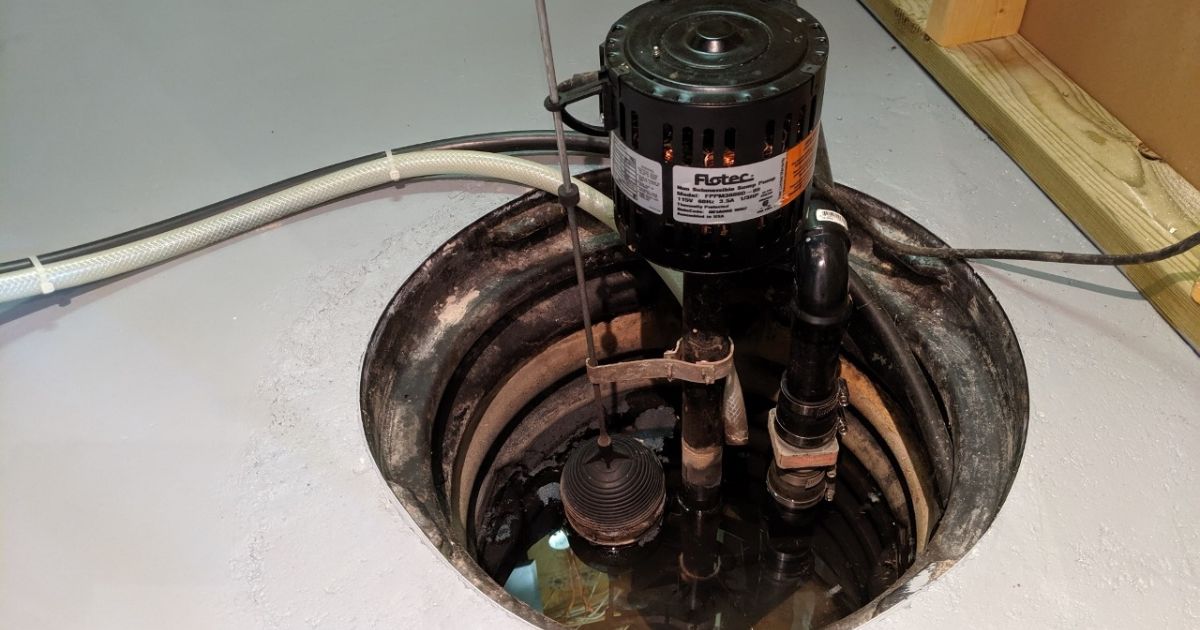
One clear sign that your sump pump may be clogged is the presence of unusual noises or vibrations during its operation. These noises can indicate that there is a blockage or obstruction in the pump system, preventing it from functioning properly.
Troubleshooting tips for this issue include checking the pump for any visible debris or objects that may be causing the clog. If there is no visible blockage, it may be necessary to disassemble the pump and inspect the impeller and discharge pipe for any obstructions.
Regular maintenance techniques such as cleaning the sump pump and ensuring proper drainage can help prevent clogs and keep the pump functioning smoothly. Understanding the signs of a clogged sump pump is crucial, as it can lead to further problems such as water backup or flooding in the basement.
Water Backup or Flooding in the Basement
The presence of water backup or flooding in the basement is a concerning indication that the sump pump’s clog or obstruction may be causing further issues. Basement flooding poses a serious risk to the structural integrity of your home and can lead to costly repairs. To prevent water damage and address the issue promptly, it is important to understand the common causes of basement flooding.
- Heavy rain: Excessive rainfall can overwhelm the sump pump and lead to water backup in the basement.
- Clogged or damaged gutters: When gutters are clogged or damaged, water can overflow and seep into the basement.
- Foundation cracks: Cracks in the foundation can allow water to enter the basement, especially during heavy rain or flooding.
Recognizing these common causes can help you take preventive measures and ensure the proper functioning of your sump pump. In the next section, we will discuss the problem of a sump pump not turning on or running continuously.
Sump Pump Not Turning on or Running Continuously
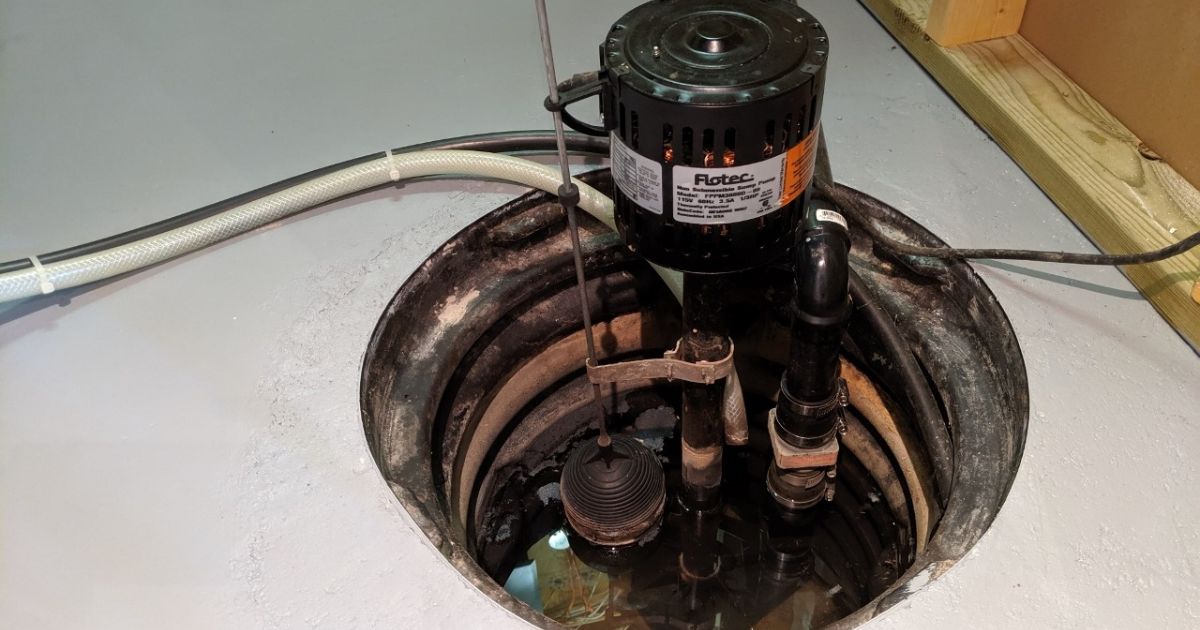
To continue our discussion from the previous subtopic, it is important to address the issue of a sump pump failing to activate or running continuously. When it comes to sump pump maintenance, troubleshooting is crucial to ensure its proper functioning.
If your sump pump does not turn on, it could be due to a variety of reasons. First, check if the pump is receiving power by verifying the circuit breaker and GFCI outlet. It is also important to examine the float switch, as a stuck switch can prevent the pump from activating.
On the other hand, if your sump pump runs continuously, it could indicate a faulty float switch or a high water table. Regularly inspecting and maintaining your sump pump can help prevent these issues and ensure its reliability in protecting your basement from water damage.
Foul Odors Coming From the Sump Pump or Pit
When foul odors emanate from the sump pump or pit, it is indicative of a potential issue that should be addressed promptly. Foul odors can be caused by a variety of factors, including:
- Build-up of debris: Over time, debris such as dirt, leaves, and other organic matter can accumulate in the sump pump pit. This build-up can lead to foul odors as the debris decomposes.
- Mold or mildew growth: Excessive moisture in the sump pump pit can create a breeding ground for mold and mildew. These organisms can produce unpleasant odors, indicating the presence of excess moisture.
- Blocked or damaged drain lines: If the drain lines connected to the sump pump become clogged or damaged, wastewater may not be able to flow properly. This can result in stagnant water and foul odors.
To prevent foul odors from occurring, regular sump pump maintenance is essential. This includes cleaning the pit, inspecting and cleaning the drain lines, and ensuring proper ventilation in the area. By taking these preventative measures, you can avoid sump pump clogs and the associated foul odors.
Excessive Debris or Sediment in the Sump Pump
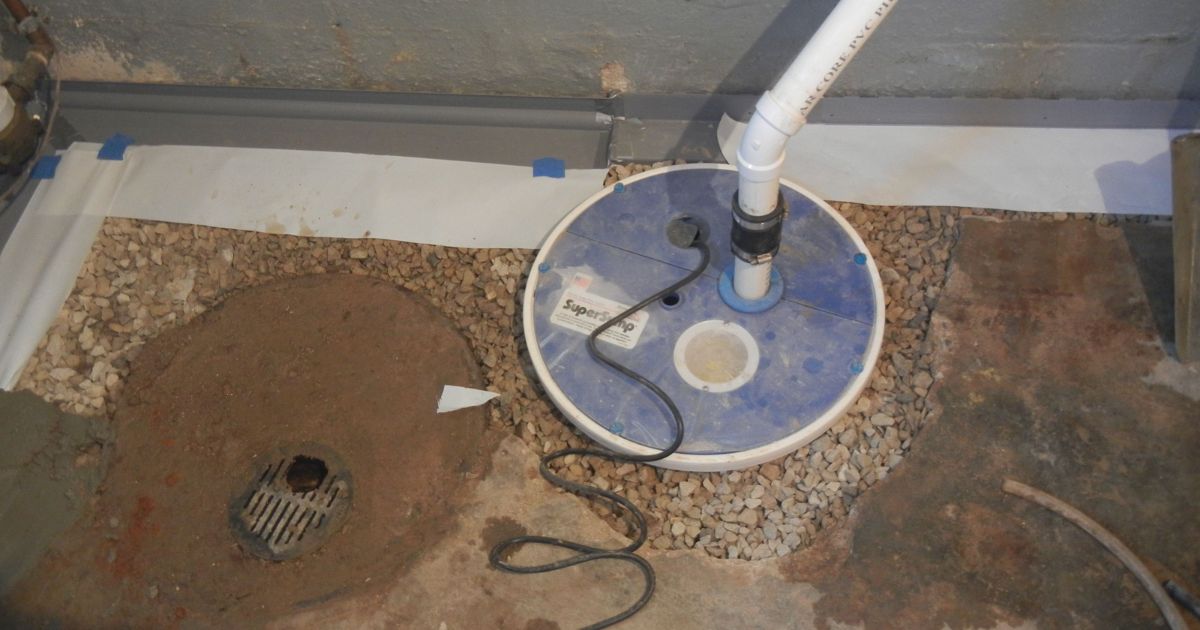
Excessive debris or sediment in the sump pump can impede its functionality and lead to potential issues that require prompt attention. When the pump becomes clogged with debris or sediment, it may struggle to effectively remove water from the pit, which can result in flooding and damage to your property. To ensure the sump pump operates efficiently, regular maintenance is necessary.
This includes cleaning the sump pit and inspecting the pump for any signs of clogged pipes or excessive sediment buildup. Here are a few maintenance tips to keep your sump pump in good working condition:
| Maintenance Tips |
|---|
| Regularly clean the sump pit to remove any debris or sediment. |
| Inspect the pump and check for any clogged pipes or obstructions. |
| Consider installing a sump pump screen or filter to prevent debris from entering the pump. |
| Test the pump regularly to ensure it is functioning properly. |
| If you notice excessive debris or sediment, consider consulting a professional for further assistance. |
Frequently Asked Questions
Can a Sump Pump Become Clogged Even if It Is Running Continuously Without Any Issues?
A sump pump can become clogged even if it is running continuously without any issues. To prevent clogging, regular maintenance is crucial. Signs of a clogged sump pump include unusual noises, reduced water flow, and water backup in the basement.
How Often Should a Sump Pump Be Cleaned to Prevent Clogging?
To ensure optimal performance and prevent clogging, it is recommended to have a sump pump inspected for maintenance at least once a year. While homeowners can clean it themselves, consulting a professional is advisable for thorough cleaning and any underlying issues.
Are There Any DIY Methods to Unclog a Sump Pump Without Professional Help?
DIY unclogging methods for a sump pump can be effective, but it is important to recognize when it is time to call a professional. Understanding the signs of a clogged sump pump is crucial for prompt action.
Can a Clogged Sump Pump Lead to Other Plumbing Issues in the House?
A clogged sump pump can indeed lead to other plumbing issues in the house. It can cause water backup, flooding, and damage to the foundation. Regular maintenance and cleaning can prevent sump pump clogging.
Is It Normal for a Sump Pump to Emit a Strange Odor After Being Clogged?
A strange odor emitted by a sump pump after being clogged may indicate the presence of stagnant water or debris. Regular sump pump maintenance, including cleaning and inspecting the system, can help prevent clogs and address any potential issues.
Conclusion
In conclusion, identifying a clogged sump pump can be determined by noticing unusual noises, water backup or flooding, the pump not turning on or running continuously, foul odors, and excessive debris or sediment. By paying attention to these signs, homeowners can take prompt action to prevent basement flooding and maintain the efficient functioning of their sump pump. Learn more “How to get rid of bad smell from sump pump?”

